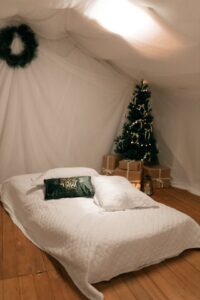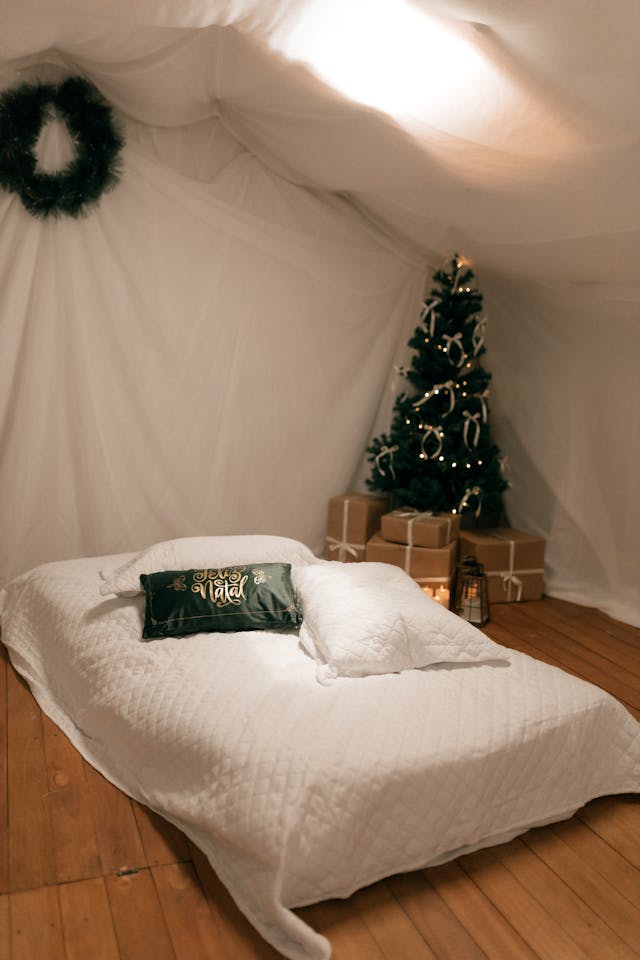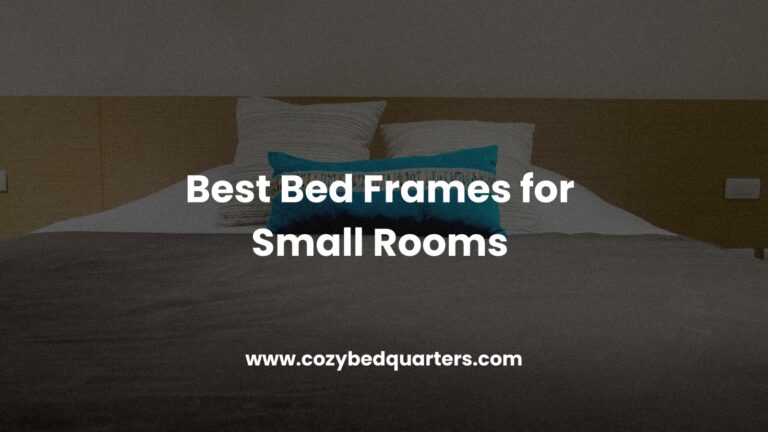Illusion of Space: 7 Brilliant Mirror Tricks to Transform Your Bedroom
Mirrors are the most affordable way to create the illusion of space—they bounce light, deepen sightlines, and make even a compact bedroom feel calm, bright, and open.
Key Takeaways: Illusion of Space
- Mirrors amplify light and architectural depth, enhancing the illusion of space without remodeling.
- Strategic placements—opposite windows, behind nightstands, or on closet doors—maximize visual expansion.
- Small reflective accents compound the effect while adding texture and style.
Why Mirrors Work: The Science Behind the Illusion
Mirrors reflect light and repeat depth cues, which makes walls appear to recede. That visual echo is what convinces your brain the room is larger than it is. Use mirrors to redirect daylight into dim corners and to spotlight your favorite views or features.
For sleep-friendly results, balance reflection with soft, indirect lighting and consider how nighttime glare might affect rest. See Sleep Foundation’s guidance on shaping an ideal bedroom environment for healthy sleep (Sleep Foundation).

Mirror Trick #1: Place a Mirror Opposite a Window
Start with the most powerful move. A mirror across from a window doubles your view and pushes daylight deeper into the room, instantly enlarging how the space feels.
Choose a size that reflects the widest, most attractive view—foliage, sky, or an architectural detail. If the window view is cluttered, angle the mirror slightly to capture a better focal point.

Mirror Trick #2: Lean a Tall Mirror in a Corner
A tall, freestanding mirror softens the transition between walls and visually stretches vertical lines, which adds height to the room. It also gives you flexibility to tweak angles until the reflection flatters your layout.
Test a few placements before committing—corners often give you the longest, most compelling sightlines. For more inspiration, explore our curated ideas in Discover Unique Mirrors & Wall Décor.
Mirror Trick #3: Upgrade to Mirrored Closet or Wardrobe Doors
Closet doors are prime real estate. Mirrored sliders or panels reflect the longest spans of wall and ceiling, multiplying depth with zero extra footprint.
If you can’t replace doors, apply removable mirrored film or mount lightweight framed panels. For layout pointers, see our Bedroom Mirror Placement guide.
Mirror Trick #4: Install Mirror Tiles for a Luxe, Light-Boosting Finish
You don’t need a full mirror wall to see dramatic change. A tiled panel behind a dresser or along a narrow wall can brighten the entire room while adding glamorous texture.
Keep grout lines minimal and align tiles precisely for a clean reflection. Dive deeper in Creative Mirror Placement.
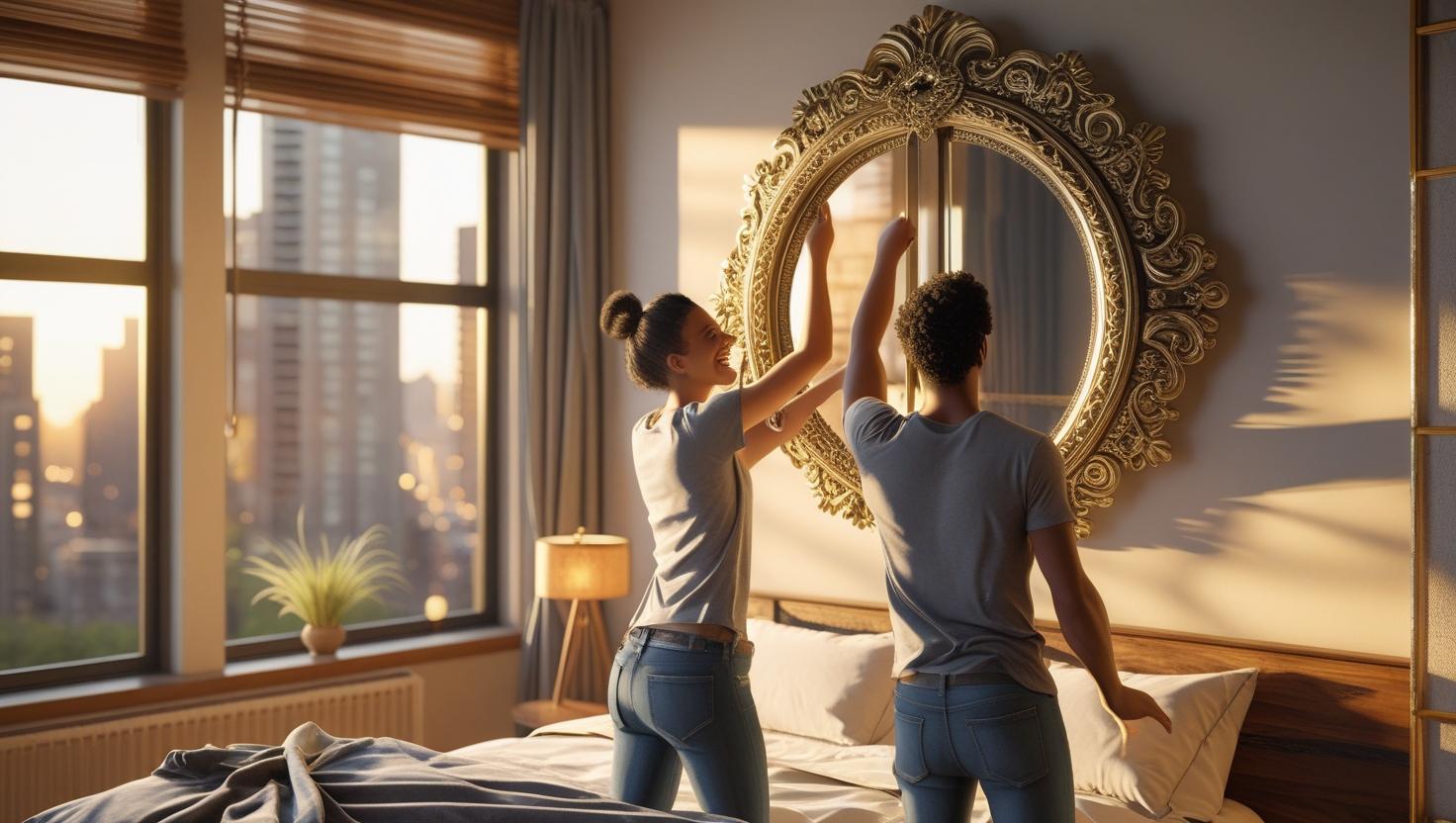
Mirror Trick #5: Hang Mirrors Above Dressers and Behind Nightstands
Placing mirrors where daily movement happens adds subtle energy and sparkle. Reflections from a dresser or nightstand area create depth, especially when paired with sconces or table lamps.
Round mirrors soften straight furniture lines, while arched or rectangular frames add structure. For safe hanging techniques and weight ratings, consult BHG’s step-by-step tutorial (Better Homes & Gardens).
Mirror Trick #6: Layer Small Reflective Accents for Compound Impact
You can amplify results without going oversized. Mirrored trays, metallic frames, reflective vases, and mirrored nightstands scatter light and gently reinforce the illusion of space.
Cluster accents near natural light sources, but avoid glare by using diffused bulbs or shaded lamps. Explore mix-and-match ideas in Mirrors & Wall Décor.
Mirror Trick #7: Angle Mirrors to Emphasize Room Depth
Don’t always hang mirrors flat. A slight angle can steer reflections toward the longest sightline—down a hallway, across a bed, or toward a favorite architectural detail—to enhance perceived length and volume.
This is especially effective in long-and-narrow rooms, where an angled mirror teases more of the space into view.
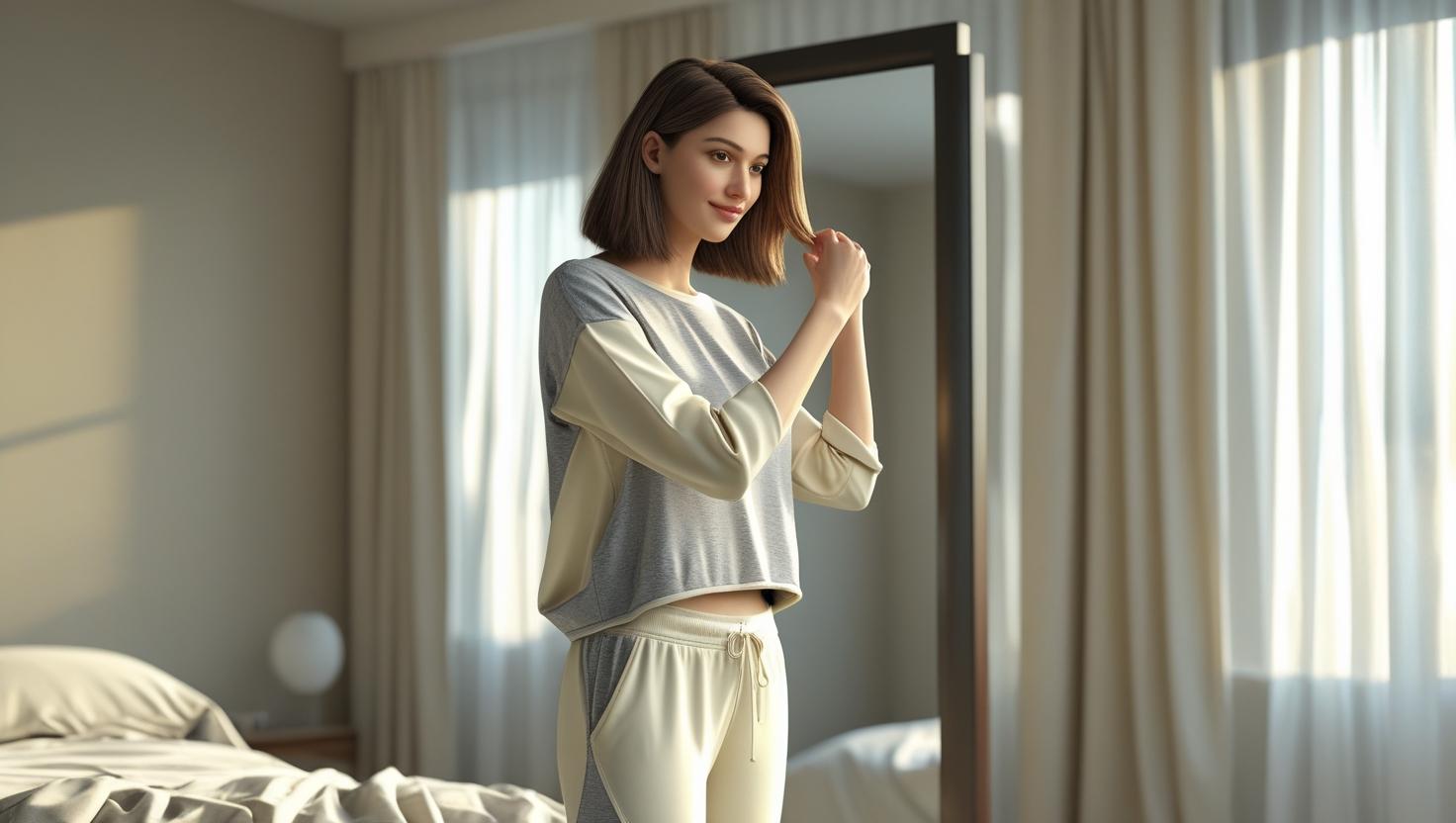
Small Bedroom Playbook: Big Results in Tight Quarters
In very compact rooms, prioritize a tall leaning mirror or mirrored closet doors, then add one reflective accent near your brightest light source. Keep surfaces clear to maximize clean, readable reflections that support the illusion of space.
For styling examples across the home, Parachute’s mirror guide walks through placement choices by room (Parachute Home).
Not Just for Bedrooms: Hallways, Offices, and Entries
Hallways feel wider with a vertical mirror. Offices gain brightness with a mirror behind the desk. Entries benefit from a statement piece that reflects greenery, art, or natural light the moment you walk in.
Mind proportions: a mirror should feel integrated with surrounding furniture and not overwhelm the vignette. See BHG’s proportion tips for mirror styling and placement (Better Homes & Gardens).
Light, Sleep, and Mirror Placement: Finding the Right Balance
Mirrors magnify light, which is great by day but can be distracting at night. If you’re sensitive to reflections, angle or place mirrors so they don’t bounce bedside lamps directly back into your line of sight. Pair with dimmers, warm bulbs, and blackout shades for restful evenings.
For a calm sleep setting, review expert-backed environment tips, including temperature, light, and noise controls (Sleep Foundation).
Quick Styling Tips for Mirrors That Feel Effortless
Match frame materials to your mood—wood for warmth, black metal for modern, brass for glam. Keep glass spotless; haze and smudges dilute light. Experiment with shapes and leave breathing room so reflections read clearly and sustain the illusion of space.
When in doubt, start simple and scale up: one well-placed mirror often changes the room more than a cluster of smaller pieces.
FAQ: Mirrors and the Illusion of Space
- How do mirrors create the illusion of space?
- Mirrors reflect light and duplicate depth cues, which makes walls appear farther away and rooms feel larger than their true dimensions.
- Where should I place a mirror in a small bedroom?
- Opposite a window or along the longest uninterrupted wall. Both placements maximize light and draw the eye outward.
- Can too many mirrors feel overwhelming?
- Yes—balance reflective surfaces with matte textures and soft fabrics. Aim for clarity over clutter to maintain a soothing atmosphere.
Final Thoughts
Used with intention, mirrors deliver instant impact—more light, longer sightlines, and a calmer, more open mood. Lean into the illusion of space with a single bold placement, then layer reflective accents as you refine the look. For handpicked ideas and styles, browse our Cozy Bed Quarters mirror and wall décor collection.



